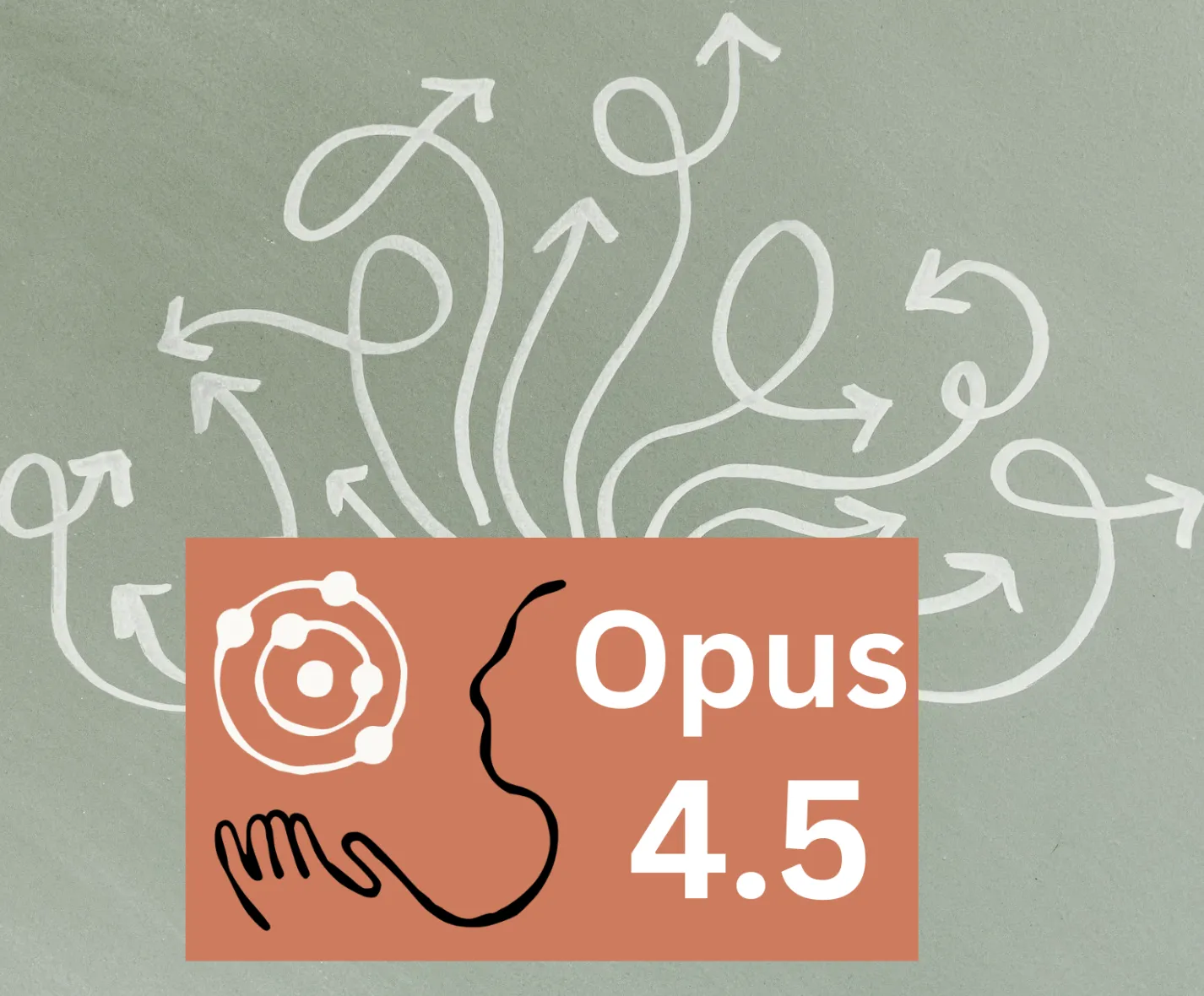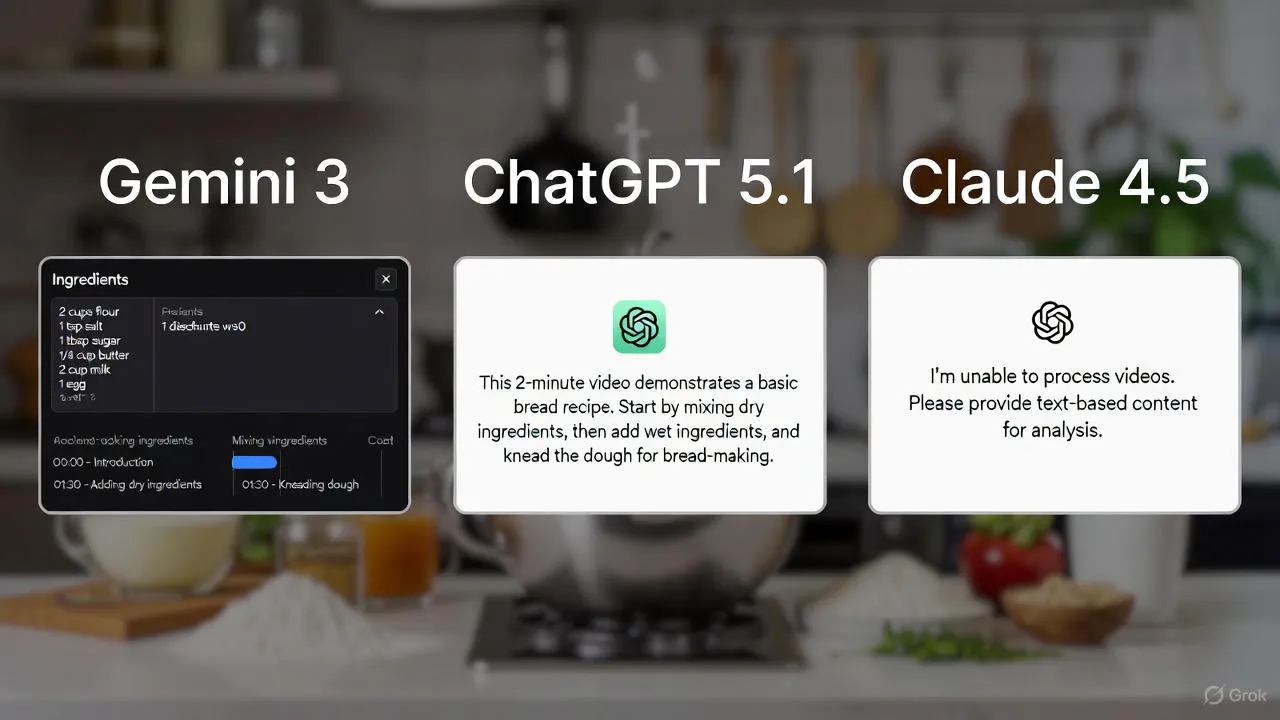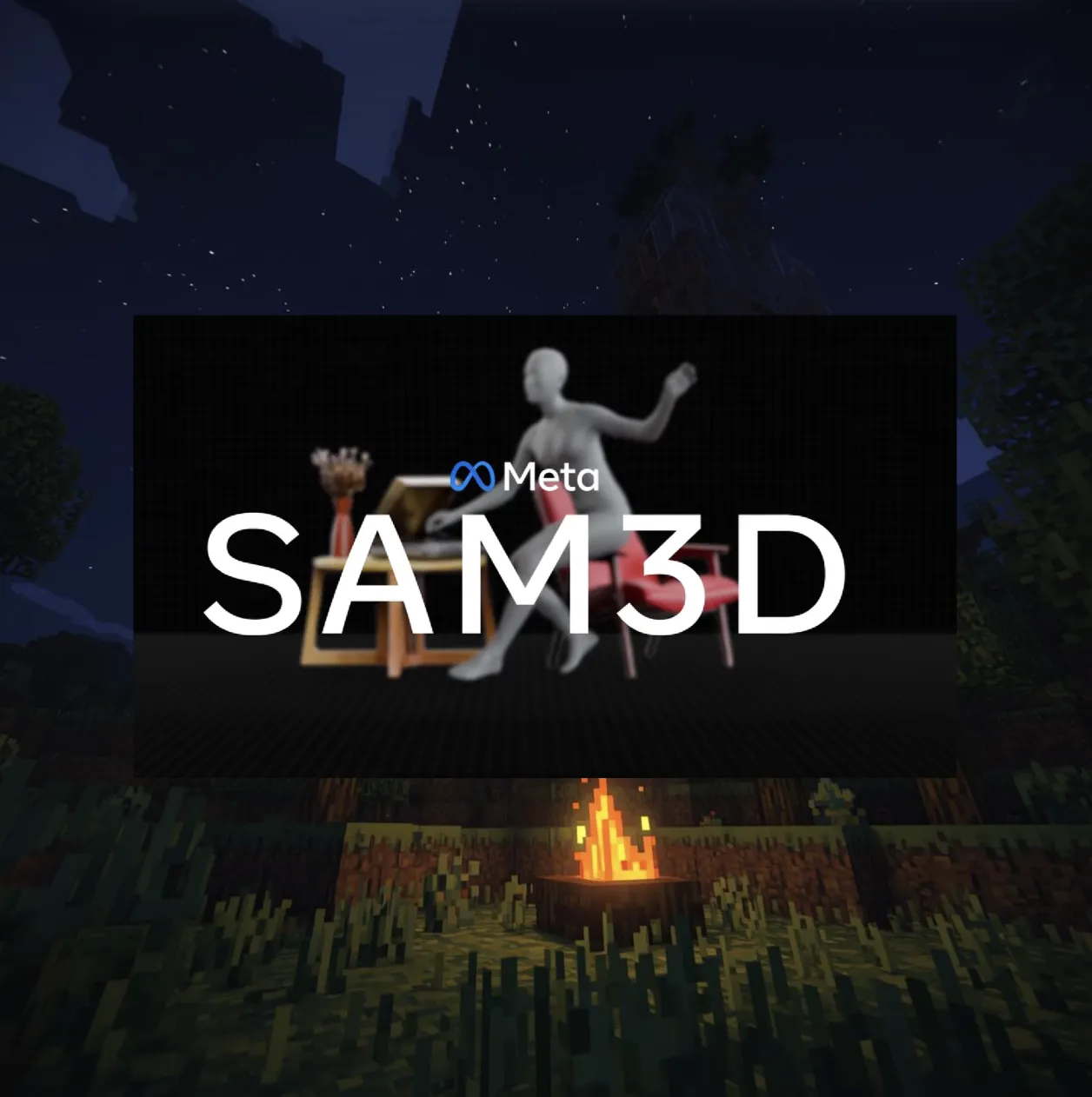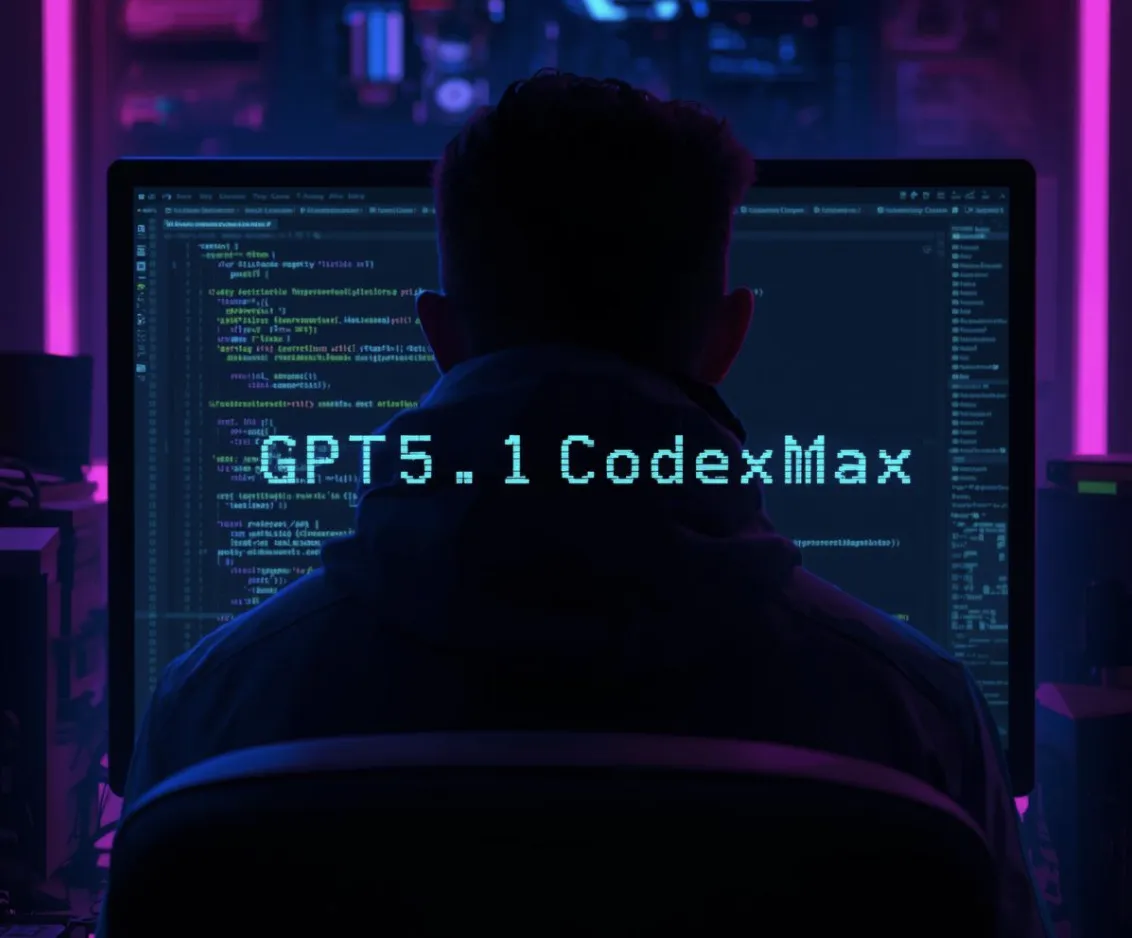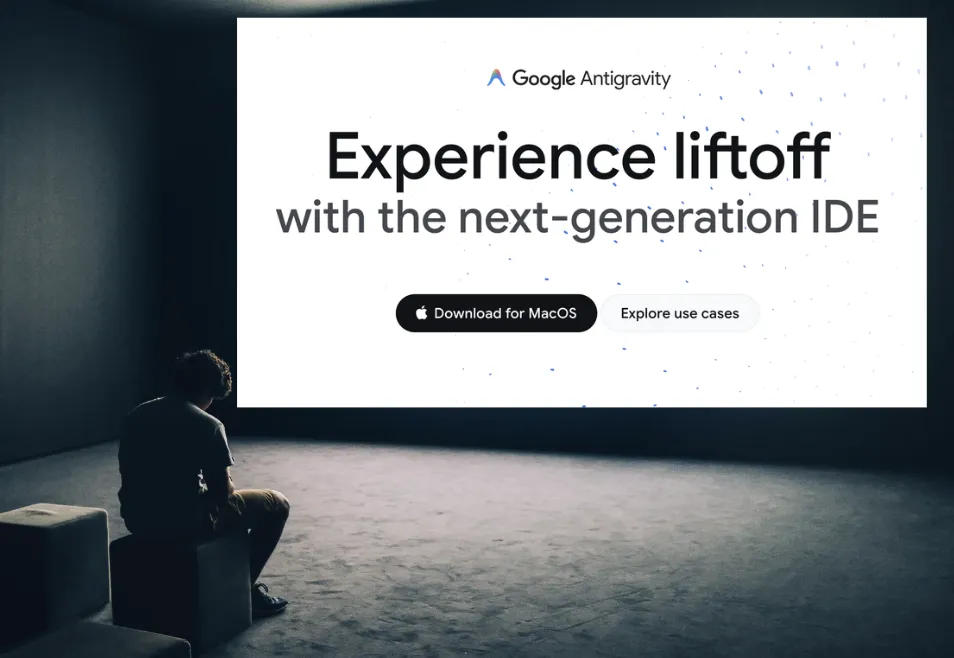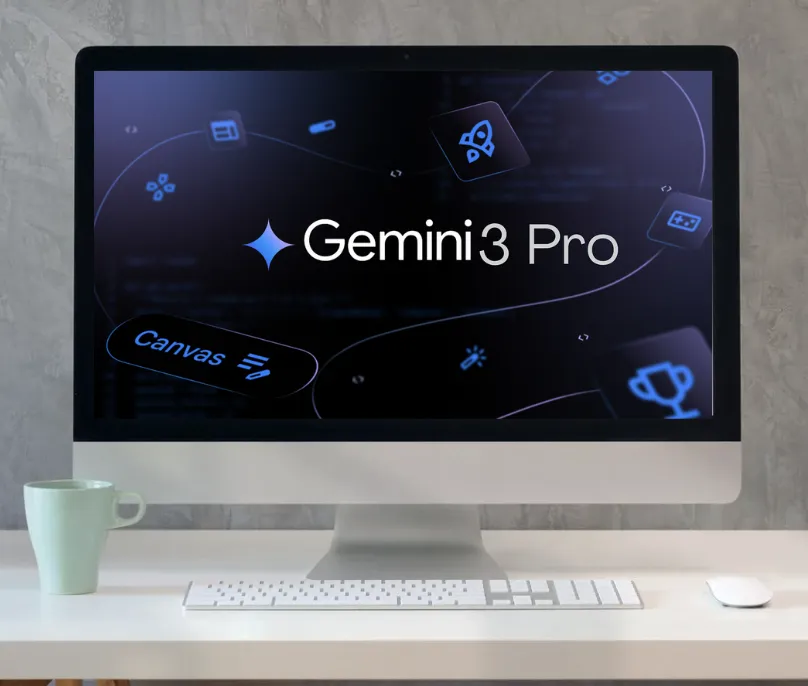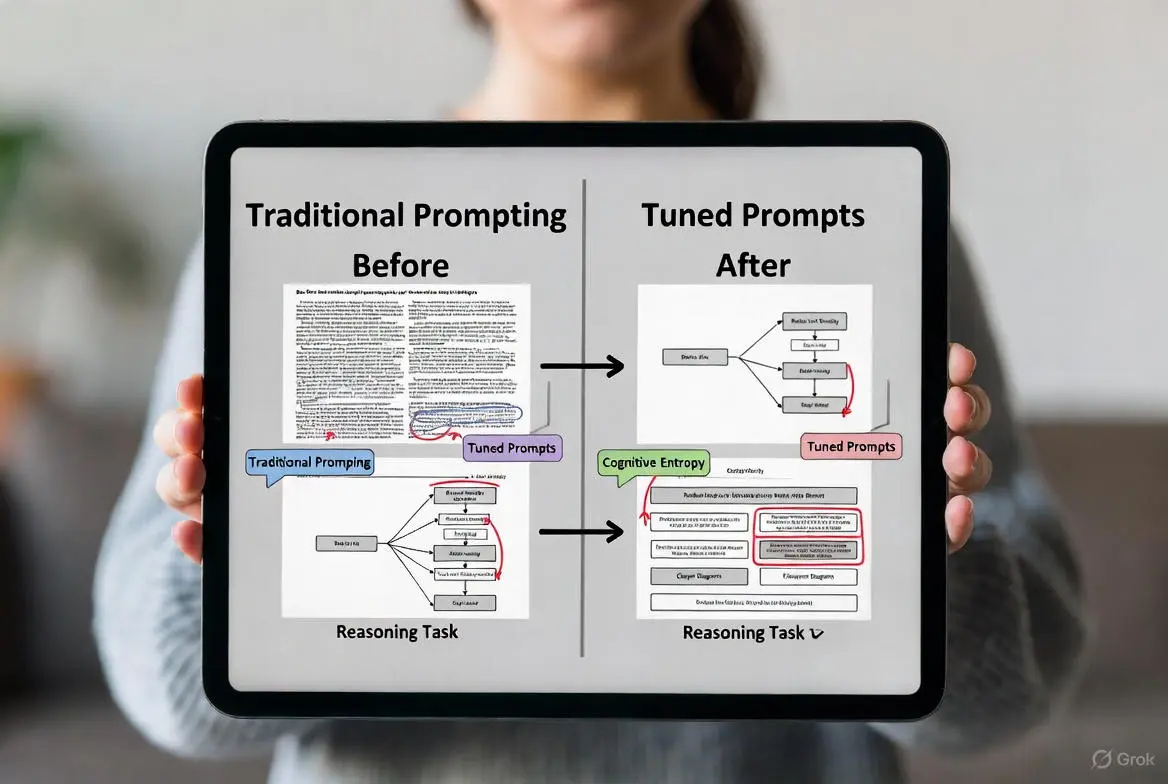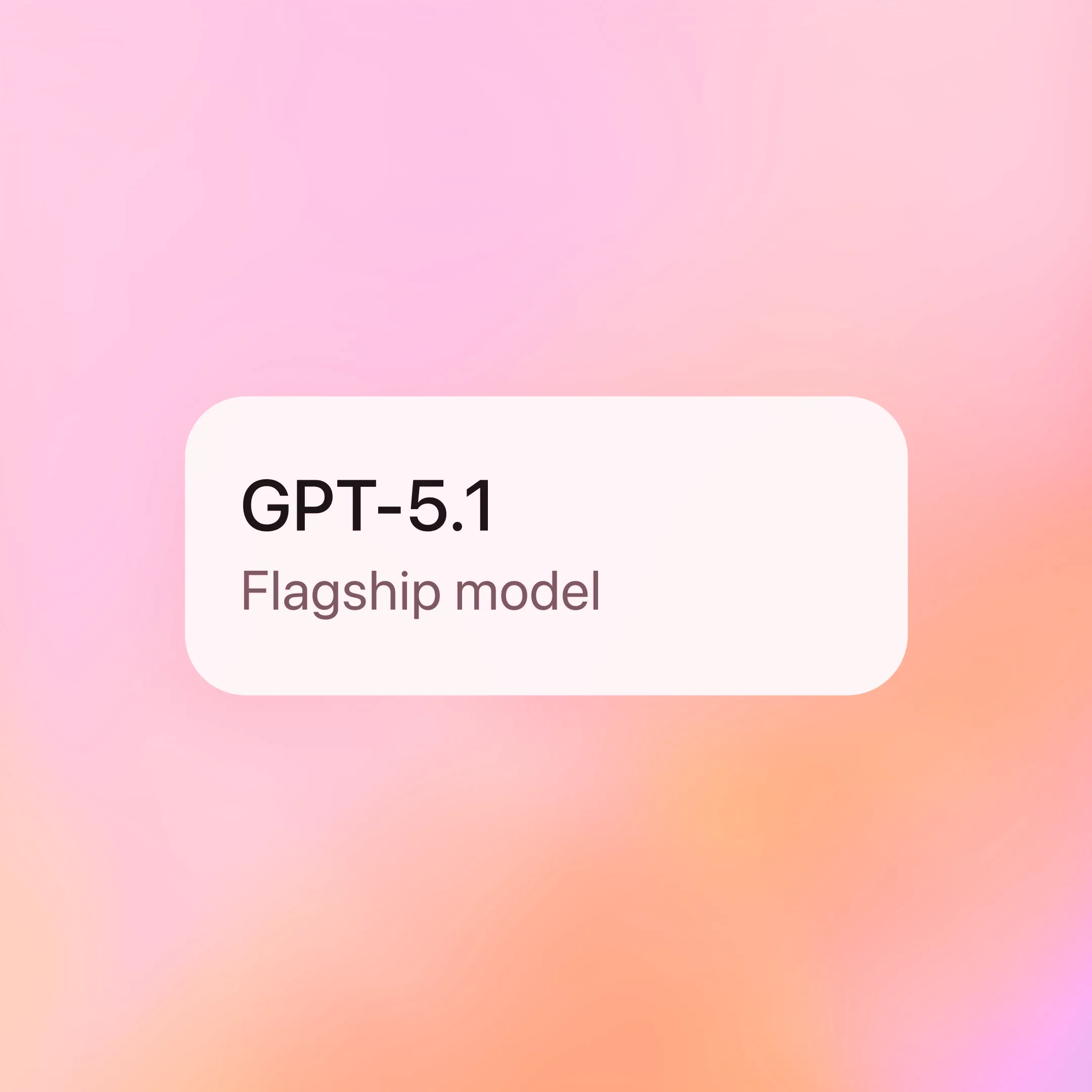Full LLM Comparison: Claude Opus 4.5 vs. ChatGPT 5.1 vs. Google Gemini 3 Pro

Author: Boxu Li
Introduction
In late 2025, three AI powerhouses – Anthropic, OpenAI, and Google DeepMind – each released next-generation large language models. Anthropic’s Claude Opus 4.5, OpenAI’s ChatGPT 5.1 (based on the GPT‑5.1 series), and Google’s Gemini 3 Pro represent the cutting edge in AI. All three promise significant leaps in capability, from handling massive contexts to solving complex coding and reasoning tasks. This deep dive provides a technical comparison of these models across key dimensions – performance benchmarks, reasoning capabilities, code generation, API latency, cost, token context window, fine-tuning and customization – to understand how they stack up against each other.
Model Profiles: Claude Opus 4.5 is Anthropic’s latest flagship model (a successor to Claude 2 and the Claude 4 series), claiming to be “the best model in the world for coding, agents, and computer use”[1]. OpenAI’s ChatGPT 5.1 is an upgrade to the GPT‑5 series, offered in two modes (Instant and Thinking) to balance speed and reasoning depth[2]. Google’s Gemini 3 Pro is the top-tier instance of the Gemini family, a multimodal model built by Google DeepMind, touted as “our most intelligent model” with state-of-the-art reasoning and tool use[3][4]. While detailed architectures are proprietary, all three are large Transformer-based systems likely on the order of trillions of parameters, augmented with extensive training and optimization (e.g. reinforcement learning from human feedback). Below, we compare them in detail.
Performance on Benchmarks
Knowledge & Reasoning (MMLU, ARC, etc.): On broad knowledge tests like MMLU (Massive Multi-Task Language Understanding), all three models operate near or above human-expert level. Google reports Gemini 3 Pro achieving about 91.9% on the most difficult question sets (GPQA Diamond) and topping the LMArena leaderboard with an Elo of 1501[5]. GPT‑5.1 is similarly strong on MMLU – in one analysis, GPT‑5.1 scored around 91.0% on MMLU, roughly on par with Gemini 3 Pro[6]. Anthropic hasn’t published an official MMLU for Opus 4.5, but its predecessor (Claude Sonnet 4.5) was in the high-80s% range[7], suggesting Opus 4.5 is around that level for academic knowledge tasks. On extremely challenging reasoning exams, differences emerge.
Humanity’s Last Exam (a brutal reasoning test) saw Gemini 3 Pro score 37.5% (no tools) – significantly higher than GPT‑5.1 (~26.8%) or Anthropic’s prior model (~13.7%)[8]. Likewise, on the ARC-AGI reasoning challenge, Gemini 3 Pro reached 31% (and up to 45% in a special “Deep Think” mode), far surpassing GPT‑5.1 (~18%) and previous Claude models[9]. These results indicate that Google’s model currently leads on the hardest reasoning benchmarks, likely reflecting Gemini’s advanced planning and problem-solving training. OpenAI’s GPT‑5.1 is not far behind on knowledge and reasoning, while Anthropic’s strength lies elsewhere (as we’ll see in coding). Overall, on standard benchmarks like MMLU and PiQA all three are tightly clustered at ~90% accuracy[5], but for “frontier” reasoning tests (complex math, logic puzzles), Gemini 3 Pro has an edge with its “PhD-level” performance[10].
Code Generation & Software Benchmarks: Anthropic Claude Opus 4.5 has explicitly targeted coding and “agentic” computer-use tasks, and it currently claims the crown on code benchmarks. In Anthropic’s internal evaluation on SWE-Bench (Software Engineering Bench) Verified, Opus 4.5 achieved 80.9% success – the highest of any frontier model[11]. This slightly outperforms OpenAI’s GPT‑5.1-Codex-Max model (77.9%) and Google’s Gemini 3 Pro (76.2%) on the same test[11]. The chart below, from Anthropic’s announcement, illustrates the margin by which Claude 4.5 leads in real-world coding tasks:
Claude Opus 4.5 achieves the highest score on SWE-Bench Verified (real-world coding problems), slightly surpassing OpenAI’s GPT‑5.1 Codex and Google’s Gemini 3 Pro[11].
This result is notable because GPT‑5.1’s Codex-Max variant was itself a major improvement for coding (OpenAI trained it on software engineering tasks and tool use)[12]. Yet Opus 4.5 managed to leap ahead by a few percentage points. Google’s Gemini 3 Pro is close behind; it “greatly outperforms” its predecessor Gemini 2.5 on these coding agent benchmarks[13], but currently trails the new Claude. In practical terms, all three models are highly capable coding assistants – able to generate correct code for complex tasks, refactor large codebases, and even operate development environments. But Anthropic’s focus on code quality and efficiency shows: developers reported Claude Opus 4.5 demonstrates “frontier task planning and tool use” in coding, and solves problems with fewer tokens[14][15]. In fact, Anthropic says Opus 4.5 can handle multi-step coding workflows “more efficiently than any model we’ve tested” and yields higher pass rates while using up to 65% fewer tokens on the same tasks[16]. This efficiency and coding skill make Claude 4.5 extremely strong for software engineering use cases.
Other Benchmarks: Each model has its niche strengths. Gemini 3’s multimodal prowess is reflected in image+video reasoning benchmarks – for example, MMMU-Pro (Multimodal MMLU) and Video-MMMU, where Gemini 3 Pro scored 81% and 87.6% respectively, establishing a new state-of-the-art[17]. It also achieved 72.1% on SimpleQA Verified, indicating improved factual accuracy in open-ended Q&A[18]. OpenAI’s GPT‑5.1, meanwhile, excels in conversational quality and follows instructions more closely than its predecessors. While not tied to a single benchmark, OpenAI noted GPT‑5.1’s overall intelligence and communication style both saw “meaningful” improvements[19]. Many observers noted that GPT‑5.1 feels “warmer, more intelligent, and better at following instructions” in everyday tasks[2], which may not show up in pure accuracy metrics but improves real-world usability. Anthropic’s Opus 4.5 was also designed for practical tasks beyond coding – testers found it “figures out the fix” for complex multi-system bugs and “handles ambiguity and reasons about tradeoffs” without needing hand-holding[20]. In short, benchmarks tell only part of the story. All three models perform at or above human level on many academic tests. Gemini 3 pushes the frontier on difficult logical and multimodal challenges, Claude 4.5 leads on complex coding and tool-use tasks, and GPT‑5.1 offers a balance of strong performance with refined conversational ability.
Reasoning Capabilities and Long-Form Thinking
One theme in these new models is improved long-horizon reasoning – the ability to tackle complex problems through multiple steps or over extended durations. OpenAI’s GPT‑5.1 introduced a dedicated “Thinking” mode, an advanced reasoning model that is “more persistent on complex tasks”[2]. GPT‑5.1 Thinking will actually “think” longer (i.e. allocate more internal computation or steps) for difficult queries, enabling it to solve problems that require multi-step logic. Google took a similar approach with Gemini 3 Deep Think, an optional mode for Gemini 3 Pro that “pushes the boundaries of intelligence even further” on complex problems[21]. In testing, Gemini 3 Deep Think significantly outperformed the normal mode on the hardest benchmarks (e.g. boosting that Humanity’s Last Exam score from 37.5% to 41.0%, and ARC-AGI to 45.1%)[22]. This indicates the model can internally reason through very difficult tasks when given more “thinking time.”
Anthropic’s Claude Opus 4.5 similarly emphasizes extended reasoning. It automatically preserves its “thinking blocks” from previous turns, maintaining a chain-of-thought across a long session[23] – earlier Claude models would drop these, but Opus 4.5 can carry over intermediate reasoning, which is crucial for consistent multi-step work. Anthropic also added an “effort” parameter to Opus 4.5 that directly controls how many tokens the model spends on reasoning and explaining[24]. At High Effort, Opus will produce very thorough analyses (useful for complex debugging or deep research), whereas Low Effort yields briefer answers suitable for quick high-volume tasks[25]. This is effectively a knob for reasoning depth vs. speed.
In practice, these features mean each model can handle sustained reasoning tasks far better than previous generations. For example, OpenAI reported GPT‑5.1-Codex-Max can operate autonomously for hours at a time, iteratively improving code and fixing bugs without human intervention[26][27]. It uses a technique called “compaction” to prune and condense its context as it works, allowing coherent work over millions of tokens in a single session[28][29]. Simon Willison, an early tester, noted that Anthropic’s models can similarly sustain long coding sessions – he used Opus 4.5 to drive ~30 minutes of autonomous coding, and even the smaller Claude Sonnet 4.5 was able to continue the workload effectively[30][31]. Gemini 3, with its huge context window and integrated tool use, is explicitly designed to “plan and execute complex, end-to-end tasks” via agents that can run in an IDE or even a Linux terminal[32][33]. In Google’s own products, Gemini-based AI can analyze lengthy documents or videos and produce structured outputs like flashcards or step-by-step plans[34][35].
Bottom line: All three models have made reasoning more persistent and autonomous. They can handle complex workflows that span many steps. OpenAI and Google offer toggles (Thinking mode, Deep Think) to ramp up reasoning when needed. Anthropic’s Opus runs at a high reasoning level by default, and gives developers manual control over the trade-off between thoroughness and latency[24]. This reflects a convergence in design: rather than always responding in one-shot, these models internally simulate “thinking for a longer period”[36][37] to tackle harder problems and use tools effectively, moving closer to true agent-like behavior.
Code Generation and Tool Use

Coding Abilities: As noted earlier, Claude 4.5 currently edges out GPT‑5.1 and Gemini 3 on measured coding benchmarks[11]. But all three are extremely capable at code generation, far beyond models from just a year or two ago. OpenAI’s GPT‑5.1-Codex-Max, for instance, was “trained on real-world software engineering tasks” like code reviews, creating pull requests, and answering coding Q&A[12]. It can work across multiple files and even handle Windows environments (something new, indicating training on OS-specific tasks)[38][39]. Meanwhile, Claude Opus 4.5 was responsible for complex refactorings spanning multiple codebases and agents, according to Anthropic’s customers[40]. Developers using Claude in an IDE (e.g. Claude Code) found that it could coordinate changes across dozens of files with minimal errors[41]. Google’s Gemini 3 also shines in software development: it’s described as “the best vibe-coding and agentic coding model we’ve ever built” by Google, and it topped a WebDev benchmark (web development tasks) with an Elo of 1487[13]. In a live Terminal-Bench test (having the model operate a Linux terminal), Gemini 3 Pro scored 54.2%, higher than GPT‑5.1 (~47%) or prior Anthropic models[42][43]. This suggests Gemini is especially strong at using tools/commands to accomplish coding tasks autonomously.
Tool Use and Agents: Beyond raw code generation, a key frontier is agentic behavior – having the model use tools or act as an autonomous agent. All three companies are enabling this in different ways. OpenAI’s platform supports function calling and has introduced “OpenAI Agents” that let GPT‑5.1 invoke tools (like web browsers, code interpreters, etc.) to complete tasks. GPT‑5.1 can also automatically “compact” its working memory during long tool-using sessions, as described, so it doesn’t run out of context[28][29]. Google built an entire agent-oriented environment called Google Antigravity around Gemini 3[32]. In this system, Gemini agents have direct access to a code editor, terminal, and browser. They can “autonomously plan and execute complex, end-to-end software tasks” – writing code, running it, testing it, and iterating, all within the development platform[44][33]. This is augmented by Gemini’s multimodal skills: for example, a Gemini agent can read a screenshot or design mockup as input, then generate and execute code to reproduce the UI.
Anthropic, for its part, upgraded Claude’s “Computer Use” tools. Claude Opus 4.5 can now request a high-resolution zoomed screenshot of regions of the screen for fine-grained inspection[45][46]. In Anthropic’s Claude apps and SDK, it can operate a virtual computer – clicking buttons, scrolling, typing – and the new zoom feature helps it read small text or UI elements that were previously hard to see[47][48]. Combined with a suite of available tools (bash shell, code execution, web browser, etc. in Claude’s API[49][50]), Claude 4.5 is clearly designed to excel at “agents that use a computer.” Early testers report that Opus 4.5 exhibits “the best frontier task planning and tool calling we’ve seen yet,” executing multi-step workflows with fewer dead-ends[14][51]. For example, Warp (a dev tool company) saw a 15% improvement on Terminal Bench with Claude 4.5 compared to Claude 4.1, citing its sustained reasoning yielding better long-horizon planning[52].
In summary, when it comes to coding and tool use: - Claude Opus 4.5 is slightly ahead in pure coding success rate and extremely efficient (solving tasks with significantly fewer tokens)[53][54]. It’s a top choice for large-scale refactoring, code migration, and anything where token cost matters, thanks to optimizations that cut token usage by 50–76% in testing[55][54]. - GPT‑5.1 (Codex-Max) is a very close contender that integrates deeply with the developer workflow (CLI, IDE extensions[56]). It’s known to be a reliable coding partner that can run for hours, and now even supports multiple context windows natively (meaning it can seamlessly handle chunks of a project in sequence)[28]. OpenAI’s ecosystem also makes tool integration straightforward via function calls. - Gemini 3 Pro brings Google’s strength in integrating search, data and multi-modal input into coding. It not only writes code but can operate software (the terminal, browser, etc.) effectively. Google’s advantage in multimodal means Gemini can incorporate visual context (design mockups, diagrams) directly into the coding process – a unique capability among these models.
All three are pushing towards AI that not only writes code but acts as an autonomous engineer. This is evident in reports of AI agents that “learn from experience and refine their own skills” in an iterative loop[57][58]. One customer described Claude 4.5 agents that self-improved over 4 iterations to reach peak performance on a task, whereas other models took 10 iterations and still couldn’t match it[59][60]. This kind of adaptive, tool-using behavior is rapidly evolving, and each of these models is at the cutting edge.
Context Window and Memory
Large context windows have been a signature feature of Anthropic’s Claude, and Opus 4.5 continues that trend with a 200,000-token context window for input (and up to 64k tokens in the output)[61]. This is enough to input hundreds of pages of text or multiple lengthy documents in one go. In practical terms, 200k tokens (~150,000 words) allows, for example, feeding an entire codebase or a book into Claude for analysis. Anthropic uses this to enable “infinite” chat sessions without hitting a wall – indeed, Claude 4.5 supports very lengthy conversations and can remember far more history than most models[62][63].
Google has now leapfrogged this with Gemini 3 Pro’s 1,048,576-token context window (roughly 1 million tokens)[64][65]. This is an order of magnitude jump. Gemini 3 can “comprehend vast datasets… including text, audio, images, video, PDFs, and even entire code repositories with its 1M token context window”[64][65]. Essentially, it can take in books or hours of audio/video as input. In fact, the model supports truly multimodal inputs – you could give it a lengthy PDF, plus several images and audio clips all in one prompt, as long as the total tokens (after encoding these) is under the limit[64][66]. Google’s documentation lists that it can handle up to 900 images in one prompt, or large videos (with frames encoded as tokens)[67]. This massive context is a game-changer for tasks like reviewing large codebases, analyzing lengthy legal contracts, or summarizing hours of transcripts.
OpenAI’s GPT‑5.1 did not explicitly advertise a fixed context as large as 1M, but it introduced techniques to go beyond previous limits. GPT‑4 offered a 128k context variant (in ChatGPT Enterprise and GPT‑4 32k models), and there are hints GPT‑5 can handle up to 400k or more tokens in certain settings[68][69]. More concretely, OpenAI’s “compaction” mechanism in GPT‑5.1-Codex-Max allows the model to continuously summarize older parts of the conversation or task history, effectively giving it unlimited working memory over long sessions[28][29]. For example, GPT‑5.1 can work for 24+ hours by periodically compressing context to free up space and “repeating this process until the task is completed.”[70][71]. So while GPT‑5.1’s raw window might be on the order of 128k tokens per prompt, its design lets it surpass that by chaining contexts. OpenAI has also been rolling out context caching features and long-term conversation memory in ChatGPT, which indicate the model can remember earlier parts of a dialogue even when they exceed the nominal token limit.
To summarize the context capacities: - Claude Opus 4.5: ~200K token window (input) natively[61]. This is extremely high and suitable for most long-document tasks. Anthropic’s pricing scheme even accounts for this: if you exceed 200k in a single request, you’re billed at a higher “1M context” rate[72][73] (implying they have an experimental 1M mode too, possibly). - GPT‑5.1: Officially up to 128K in current deployments for ChatGPT Pro[74], but with automatic context compaction enabling effectively millions of tokens over a session[28][29]. We can think of it as dynamic long-context support rather than a fixed large window. - Gemini 3 Pro: 1M-token window – the largest of any major model – and explicitly designed for multimodal context (text+image+audio+video in one)[64][75]. This allows analyses like “feed the model an entire video lecture and several research papers and have it synthesize a summary or answer questions,” which would be infeasible in smaller contexts.
All this means that memory constraints are less of a blocker with these models than ever before. Where earlier models struggled to recall details from the beginning of a long document, these can hold massive amounts of information in one go. This especially benefits tasks like long-range reasoning (e.g. figuring out a solution that requires referencing many parts of an input) and open-ended dialogues that span dozens of turns.
Speed and Latency
With such large contexts and heavy reasoning, one might expect these models to be slow, but each provider has introduced ways to manage latency. OpenAI’s approach is model differentiation: GPT‑5.1 Instant vs GPT‑5.1 Thinking[76]. The Instant model is optimized for fast, conversational responses – it’s the one that “often surprises people with its playfulness while remaining clear and useful.”[77] It’s effectively the low-latency option for everyday chat. The Thinking model, on the other hand, is the workhorse for complex queries, and while it’s optimized to be faster on easy tasks, it will take longer on hard tasks because it engages deeper reasoning[78]. This two-tier model system lets users trade speed for accuracy on demand. In practice, GPT‑5.1 Instant feels very responsive (similar to GPT‑4 Turbo or faster), whereas GPT‑5.1 Thinking might take noticeably longer when solving a tough problem, but yields better answers.
Anthropic’s solution, as mentioned, is the effort parameter on Claude 4.5[24]. By default it’s set to “high,” meaning the model maximizes thoroughness (which can increase latency). Developers can dial it to medium or low. Anthropic’s data suggests that at Medium effort, Opus 4.5 can solve tasks with the same accuracy as before but using far fewer tokens, thereby responding faster[53][54]. In one example, medium effort matched Claude Sonnet 4.5’s performance on SWE-Bench while using 76% fewer output tokens[53][54] – which translates to substantially lower latency and cost. So, if an application needs quick answers, setting a lower effort yields briefer (but still competent) responses. On high effort, Claude may take a bit longer, but produces very detailed outputs. Early user reports note that Claude’s response times are “stable and predictable” even at high effort, though obviously longer responses take more time to generate[79].
Google’s Gemini 3 Pro similarly has a thinking_level parameter (with values “low” or “high”), replacing an earlier “thinking_budget” setting from Gemini 2[80]. This thinking_level lets the user decide if Gemini should do minimal internal reasoning (for speed) or maximal reasoning (for quality)[80]. Google also provides a media_resolution setting for multimodal input, where you can choose to process images/videos at lower resolution for faster results or at high resolution for better vision accuracy (at the cost of more tokens and latency)[81]. These controls acknowledge that processing 1M tokens or large images is inherently slow – so developers can tune the speed by adjusting how much the model “thinks” and how finely it analyzes media. There isn’t a public side-by-side latency benchmark of GPT‑5.1 vs Claude vs Gemini, but anecdotal evidence suggests: - GPT‑5.1 Instant is extremely fast for normal queries (often finishing in a couple of seconds), and even the Thinking mode got speed optimizations – OpenAI noted it’s “now easier to understand and faster on simple tasks” than before[78]. - Claude 4.5 on High effort is very thorough, which can mean longer outputs and slightly more latency, but on Medium/Low it speeds up considerably. One Reddit user testing coding tasks noted GPT‑5.1 and Claude were roughly comparable in speed after GPT‑5.1’s improvements, whereas earlier GPT‑5 had been slower than Claude in some long tasks[82][83]. - Gemini 3 Pro’s latency will depend on context – feeding it hundreds of images or a million tokens will naturally be slower. However, for typical prompt sizes, Gemini is reported to be snappy, and Google’s cloud infrastructure (TPUs) is optimized for serving these models globally. Google hasn’t released explicit latency numbers, but the availability of a “Gemini 3 Flash” (a fast, lower-cost variant with smaller context) suggests that the full Pro model is intended for heavy-duty tasks rather than quick Q&A[84].
In summary, all three models now allow a trade-off between speed and reasoning. They introduce internal levers or model variants to ensure that if you don’t need a deep think, you aren’t stuck waiting. For most general applications (short prompts, moderate complexity), each model can respond in near real-time (a few seconds). For very large or complex jobs, you can expect multi-second or even multi-minute runtimes, but you have control over that via settings. This is a necessary evolution as context windows and tasks grew larger – and it’s encouraging that even as they tackle more complex problems, these models remain usable in interactive settings.
Cost and Pricing
The competition isn’t just about capability – cost is a major factor, and we’re seeing aggressive moves here. In fact, Anthropic’s Opus 4.5 launch came with a dramatic price cut: Opus 4.5 API calls cost $5 per million input tokens and $25 per million output tokens[85][86]. This is ⅓ the price of the previous Opus 4.1 (which was $15/$75 per million)[85]. Anthropic deliberately slashed prices to make Claude more attractive to developers, acknowledging that past Opus models were cost-prohibitive[87][88]. At the new pricing, using Claude for large tasks is much more feasible – it’s now only slightly more expensive per token than Anthropic’s smaller models (Claude Sonnet 4.5 is $3/$15 per million)[89].
How does this compare? OpenAI’s GPT‑5.1 family is actually cheaper per token. GPT‑5.1 API calls are roughly $1.25 per million input tokens and $10 per million output tokens for the base model[89]. Google’s Gemini 3 Pro is in between: about $2 per million input and $12 per million output at the standard 200k context level[89]. (Notably, Google plans to charge a premium if you utilize beyond 200k tokens up to the full 1M context – roughly $4/$18 per million in that regime[90].) These numbers mean OpenAI currently offers the lowest token-by-token price for top-tier models. For example, generating a 1000-token answer might cost ~$0.012 with GPT‑5.1 vs ~$0.025 with Claude 4.5 – about half the cost. Google’s would be ~$0.015. However, cost has to be weighed against efficiency: if one model solves a task in fewer tokens or fewer attempts, it can save money overall. Anthropic emphasizes that Opus 4.5 is far more token-efficient, potentially cutting usage (and cost) by 50%+ on some tasks while matching prior accuracy[53][54]. As one early user pointed out, “Opus 4.5 medium reasoning matches Sonnet 4.5’s quality while using 76% fewer tokens… ~60% lower cost.”[91]. So, a developer might pay a bit more per token for Claude, but if Claude uses a lot fewer tokens to reach the solution, the total cost difference shrinks.
It’s also worth noting how accessibility is being handled: - Claude Opus 4.5 is available via API (Claude for Pro/Max/Team tiers) and on major cloud platforms like AWS, Azure, and Google Cloud[92]. There’s also a Claude Pro consumer app where Opus can be used interactively. The cost we discussed applies to API usage. - ChatGPT 5.1 is accessible to end-users through ChatGPT (Plus and Enterprise users get GPT‑5.1 as of Nov 2025), and via the OpenAI API for developers. OpenAI’s pricing for GPT‑5.1 usage in ChatGPT Plus is effectively a flat subscription, while the API is pay-as-you-go per token (as above). They also offer ChatGPT Enterprise with free usage up to certain limits. - Gemini 3 Pro is accessible through Google’s Vertex AI platform (as a Preview model currently)[93], via the Gemini API and in products like the Gemini Chat app and AI Studio[94][95]. Google hasn’t publicly listed token prices on their site, but according to reports, the API pricing is in the range mentioned ($2/$12 per M tokens) similar to PaLM 2’s pricing. Google also integrates Gemini into consumer features (e.g. Search Generative Experience, Google Workspace AI tools) where end-users aren’t directly billed per token.
In summary, OpenAI offers the lowest raw price for API usage of a frontier model, while Anthropic massively lowered their prices to remain competitive (Opus is now 1/3 its old cost, though still ~2× OpenAI’s rate)[89]. Google’s pricing sits between the two, with some added cost for enormous context runs[89]. For companies deciding which model to use, the cost per query will depend on the task: a long coding job might cost similarly across the three if Claude’s efficiency claims hold true, whereas short Q&A might be cheapest with GPT‑5.1. It’s great to see competition driving prices down – ultimately making advanced AI more accessible.
Fine-Tuning and Customization
One notable aspect is that fine-tuning (in the traditional sense of updating a model’s weights on custom data) is not readily available for these newest models – at least not yet. Neither Claude Opus 4.5 nor Gemini 3 Pro currently support user fine-tuning[96][97]. OpenAI has not released GPT‑5.1 for fine-tuning either (their API docs indicate “Fine-tuning: Not supported” for GPT‑5 series models)[97][98]. This is understandable: these models are extremely large and also carefully aligned; open fine-tuning could pose safety and capacity challenges.
Instead, the emphasis is on prompt-based customization. OpenAI, for example, introduced new ways to personalize ChatGPT’s behavior in the 5.1 update. They added “personality presets” and tone controls – allowing users to pick from predefined styles (like Developer, Tutor, Skeptical, etc.) or set custom instructions to shape the assistant’s responses[99][100]. This isn’t fine-tuning the model weights, but it’s a flexible mechanism to get the model to behave in specific ways. Likewise, Anthropic provides Constitutional AI style controls and system prompts to steer Claude, and with Opus 4.5 they note it “maintains reasoning continuity” and can follow complex roles or instructions better across long sessions[23]. Google’s Gemini API allows developers to supply system messages to set context or role (similar to OpenAI’s system prompt) and even incorporate implicit and explicit context caching to bias the model with relevant background info[101][102]. Essentially, while you can’t fine-tune these giants directly, you can feed them your data at runtime – for instance, by stuffing documents into the huge context window or by using retrieval-augmented prompting. Google’s Vertex AI offers a RAG Engine (Retrieval Augmented Generation) that works with Gemini to pull in enterprise documents as needed[103], accomplishing many objectives of fine-tuning (answering domain-specific questions, etc.) without changing the model’s core.
It’s worth mentioning that OpenAI has introduced smaller sibling models (like GPT-5 Nano, etc.) and open-sourced some models (like openai-o3 and o4-mini)[104]. Those smaller models might support fine-tuning and serve as distilled versions of GPT‑5 for specialized tasks. But when it comes to the flagship models compared here, none of them currently let you retrain the full model on custom data. Instead, the strategy is: use prompt engineering, system instructions, retrieval of external knowledge, and built-in parameters (like tone, thinking level) to adapt the model’s output to your needs.
From a research standpoint, this might change in the future – methods like LoRA (Low-Rank Adaptation) or other parameter-efficient fine-tuning might become feasible on these large models. But for now, “fine-tuning” is effectively limited to the provider’s own training pipeline. For example, OpenAI fine-tuned GPT‑5.1 from GPT‑5 base with additional reinforcement learning and instruction tuning (they mention GPT‑5.1 is “built on an update to our foundational reasoning model”)[105], and Anthropic used techniques like constitutional fine-tuning to align Claude. As an end user or developer, you leverage these models largely as-is, customizing via the API interface rather than weight updates.
Model Architecture and Design (Speculation)
While official details are scarce, we can glean some design philosophy differences: - Claude Opus 4.5 is presumably a dense Transformer model like its predecessors. Anthropic hasn’t disclosed parameter count, but earlier Claude versions were rumored to be on par with GPT‑4 in scale. Anthropic’s focus seems to be on data/skills: they trained Claude 4.5 heavily on coding, tool use (shell, web), and dialogue, and applied advanced alignment techniques (reinforcement learning with human feedback plus their “Constitutional AI” method).
The result is a model that “just gets it” – anecdotally having better judgment on real-world tasks[20][106]. One interesting architectural aspect is how Claude handles long context: Anthropic likely uses positional encoding strategies or attention tweaks (like ALiBi or concentrated attention) to reach 200k tokens. And the fact that thinking traces are preserved suggests an architecture that treats its own chain-of-thought as part of input going forward[23]. Claude 4.5 is also offered on cloud hardware with faster matrix multiplication and possibly model parallelism to handle the large context efficiently. - OpenAI GPT‑5.1 (and GPT‑5) is thought to combine a base model with specialized heads/modes.
OpenAI’s blog implies GPT‑5 is a “unified system” comprising a fast model and a “deeper reasoning model (GPT-5 Thinking) for harder questions”[107]. It’s possible that GPT‑5’s architecture includes multiple modules or an Mixture-of-Experts style switch that routes easy queries to a smaller sub-model and hard queries to a larger one, thereby improving speed and cost-efficiency. The mention of “two updated versions now available in ChatGPT (Instant and Thinking)”[99] supports this. Under the hood, GPT‑5 likely has on the order of trillions of parameters or multiple expert models – one early rumor was that GPT-4 had 16 experts of ~111B parameters each (though unconfirmed). GPT‑5 might have scaled parameters or more efficient training (OpenAI invested in new optimization techniques and bigger clusters). It also expanded input modalities somewhat: GPT‑5 can accept images as input (following on GPT-4’s vision), and possibly other modalities in limited form[68][108].
However, OpenAI has been more conservative with multimodal in practice; they separate out things like Sora (a model for audio and possibly other modalities) rather than fully fusing them. So GPT‑5.1 is primarily a text-based model with some vision capability. - Google Gemini 3 Pro is explicitly multimodal from the ground up[109][110]. The Gemini family (Gemini 1, 2, 3) was designed by Google DeepMind to handle text, vision, and more in a unified model. It likely incorporates vision encoders and audio processing within the model architecture.
Google’s research report or hints (if any are published) might detail that Gemini uses a combination of transformer backbones – perhaps one for language, one for vision, with a shared representation space. The results (like state-of-art on multimodal benchmarks[17]) suggest a very tight integration. Another aspect is tool use: DeepMind had prior work on adaptive agents (e.g. AlphaGo, robotics, etc.), and Demis Hassabis hinted that techniques from those domains would influence Gemini’s design. For example, Gemini may incorporate reinforcement learning or planning algorithms to increase its “agentic” capabilities[109][111]. The fact that it can operate a computer and solve interactive tasks (Terminal, Vending-machine benchmarks, etc.) hints at an architecture or training routine that involved agentic simulations. We also saw mention of “thought signatures” and stricter validation for multi-turn tool use in the Gemini docs[112][113] – this could be an architectural feature to keep the model’s tool-calling behavior reliable (perhaps a separate module verifying each thought/action). Finally, Gemini’s 1M context likely required architectural innovation – possibly combining retrieval mechanisms or chunked attention so that it doesn’t attend quadratically over a million tokens at once.
In essence, Claude, GPT-5.1, and Gemini are all massive Transformer-based AI systems with various bells and whistles. The exact architectures are proprietary, but each has been optimized for slightly different priorities: Claude for very long contexts and reliability in coding/agents, GPT-5.1 for a balanced chat experience with adaptive reasoning, and Gemini for broad multimodal understanding and complex tool-mediated tasks.
Conclusion
We are witnessing an exciting convergence at the frontier of AI: Claude Opus 4.5, ChatGPT 5.1, and Gemini 3 Pro all represent “frontier models” pushing the boundaries of what AI can do, yet each with a unique flavor. Claude 4.5 emerges as the coding and agent specialist – it’s the model you might call on to refactor your entire codebase overnight or drive a spreadsheet for an hour. It’s tuned for “deep work” and now made more accessible through lower pricing[85][86]. ChatGPT 5.1 continues OpenAI’s legacy of broad capability with polish – it excels at conversation and instructions, while still being a formidable general problem-solver and coder (especially with the Codex-Max variant)[11]. Its improvements in following user intent and offering customization make it a very user-friendly AI partner[19]. Gemini 3 Pro, on the other hand, feels like a peek into the future: it’s truly multimodal and exhibits reasoning abilities edging into what one might call “AGI prototypes” (with Deep Think mode tackling problems previously thought unsolvable by AI)[114][111]. With a 1M context and integration into the Google ecosystem, Gemini can be the core of applications that seamlessly mix text, images, and actions.
A few key takeaways from this:
Raw performance is now task-dependent. There is no single “best at everything” model; instead, we see a leapfrogging pattern. Claude 4.5 leads on coding benchmarks[11], Gemini 3 leads on logical reasoning and multimodal tasks[5][17], and GPT‑5.1 is essentially at parity on knowledge tests and offers the most refined conversational experience. The gaps are relatively narrow in many areas (often just a few percentage points), which is impressive considering how far these models have surpassed earlier benchmarks and even human baselines.
Context and persistence are as important as raw accuracy. The ability to carry on long conversations or tackle long documents without losing context is a massive usability win. Here, Google set a new bar (1M tokens, multi-document input)[64], but Anthropic and OpenAI have their solutions (200k tokens and compaction respectively[61][29]). This means users can expect far fewer “sorry, context limit” interruptions and can use these models for truly large-scale data summarization or analysis tasks.
Adaptability vs. fine-tuning: Even though we can’t fine-tune these giants yet, the various control levers (effort levels, personality presets, system tools) give developers and users a lot of influence over outputs without retraining[24][100]. This trend might continue: future models could have even more modular controls (for example, toggling a “strictly factual” mode, or a “creative” mode without needing separate models). - Cost is moving in the right direction – down. The fact that Anthropic felt the need to cut Opus prices by 2/3, and OpenAI and Google are competing on token prices, shows that competition is benefiting users[85][89]. Running large-scale tasks (millions of tokens) is still not cheap, but it’s becoming much more reasonable. It’s now plausible for a small startup to use a frontier model on a large dataset without an astronomical bill, which could spur more innovation.
In the end, the “best” model depends on your needs. If you require multimodal understanding or the absolute best reasoning on hard logic/math problems, Google’s Gemini 3 Pro currently has an edge. If you need an AI pair programmer or agent to automate software tasks, Anthropic’s Claude Opus 4.5 might deliver the best results (with an arguably more predictable output style for code). If you want a generalist AI that is versatile, reliable, and cost-effective for a wide range of tasks, ChatGPT 5.1 remains a fantastic choice with the backing of OpenAI’s ecosystem.
What’s clear is that all three models are pushing each other – and the field – forward. As one analysis noted, evaluating new LLMs is getting harder because each new generation is only a small step ahead of the last[115][116]. But those small steps are accumulating into something profound: AI models that approach professional-level competence in coding, exceed human experts on certain exams[117], handle multiple modalities fluidly, and can sustain long interactions. The era of large, general-purpose AI with seemingly endless context and capabilities is truly underway, and Claude 4.5, GPT‑5.1, and Gemini 3 Pro are leading the charge.
Sources: based on official announcements and documentation from Anthropic[118][11], OpenAI[2][28], and Google DeepMind[17][64], as well as benchmark results and insights reported by reputable third parties[11][13]. Each model’s claims and scores have been cited from these sources to ensure accuracy.
[1] [14] [15] [16] [20] [40] [51] [52] [59] [60] [62] [63] [87] [88] [92] [118] Introducing Claude Opus 4.5 \ Anthropic
https://www.anthropic.com/news/claude-opus-4-5
[2] [19] [76] [77] [78] [104] GPT-5.1: A smarter, more conversational ChatGPT | OpenAI
https://openai.com/index/gpt-5-1/
[3] [4] [5] [6] [7] [8] [9] [10] [13] [17] [18] [21] [22] [32] [33] [34] [35] [44] [94] [95] [109] [110] [111] [114] Gemini 3: Introducing the latest Gemini AI model from Google
https://blog.google/products/gemini/gemini-3/
[11] [53] [54] [55] [57] [58] [85] [86] [106] Anthropic’s Claude Opus 4.5 is here: Cheaper AI, infinite chats, and coding skills that beat humans | VentureBeat
https://venturebeat.com/ai/anthropics-claude-opus-4-5-is-here-cheaper-ai-infinite-chats-and-coding
[12] [26] [27] [28] [29] [36] [37] [38] [39] [56] [70] [71] [105] Building more with GPT-5.1-Codex-Max | OpenAI
https://openai.com/index/gpt-5-1-codex-max/
[23] [24] [25] [45] [46] [47] [48] [49] [50] What's new in Claude 4.5 - Claude Docs
https://platform.claude.com/docs/en/about-claude/models/whats-new-claude-4-5
[30] [31] [41] [61] [89] [90] [115] [116] Claude Opus 4.5, and why evaluating new LLMs is increasingly difficult
https://simonwillison.net/2025/Nov/24/claude-opus/
[42] [43] Gemini 3 Pro - Evaluations Approach, Methodology & Approach v2
http://deepmind.google/models/evals-methodology/gemini-3-pro
[64] [65] [66] [67] [75] [80] [81] [93] [96] [101] [102] [103] [112] [113] Gemini 3 Pro | Generative AI on Vertex AI | Google Cloud Documentation
https://docs.cloud.google.com/vertex-ai/generative-ai/docs/models/gemini/3-pro
[68] GPT-5 Explained: Features, Performance, Pricing & Use Cases in ...
https://www.leanware.co/insights/gpt-5-features-guide
[69] LLMs with largest context windows - Codingscape
https://codingscape.com/blog/llms-with-largest-context-windows
[72] Pricing - Claude Docs
https://platform.claude.com/docs/en/about-claude/pricing
[73] Claude Opus 4.5 vs Sonnet 4.5: Pricing Revolution & Performance ...
[74] GPT-5 context window limits in ChatGPT - 8K for free users,
https://x.com/rohanpaul_ai/status/1953549303638557183
[79] Claude Sonnet 4.5 vs GPT-5: performance, efficiency, and pricing ...
https://portkey.ai/blog/claude-sonnet-4-5-vs-gpt-5
[82] I tested GPT-5.1 Codex against Sonnet 4.5, and it's about ... - Reddit
https://www.reddit.com/r/ClaudeAI/comments/1oy36ag/i_tested_gpt51_codex_against_sonnet_45_and_its/
[83] GPT-5.1 Codex vs. Claude 4.5 Sonnet vs. Kimi K2 Thinking
[84] The End of Moore's Law for AI? Gemini Flash Offers a Warning
https://news.ycombinator.com/item?id=44457371
[91] Claude Opus 4.5 is MUCH CHEAPER than Opus 4.1 - Reddit
https://www.reddit.com/r/singularity/comments/1p5pdjq/claude_opus_45_is_much_cheaper_than_opus_41/
[97] models/gpt-5 - Model - OpenAI API
https://platform.openai.com/docs/models/gpt-5
[98] What's new in Azure OpenAI in Microsoft Foundry Models?
https://learn.microsoft.com/en-us/azure/ai-foundry/openai/whats-new?view=foundry-classic
[99] [100] OpenAI walks a tricky tightrope with GPT-5.1's eight new personalities
[107] Introducing GPT-5 - OpenAI
https://openai.com/index/introducing-gpt-5/
[108] GPT-5: New Features, Tests, Benchmarks, and More - DataCamp
https://www.datacamp.com/blog/gpt-5
[117] GPT-5 just passed the hardest medical exam on Earth, and ... - Reddit


